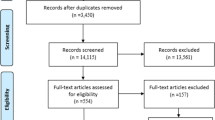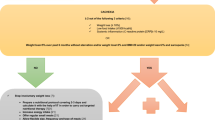Abstract
Background
Studies have revealed the impacts of various inflammatory and nutritional markers in patients with esophageal squamous cell carcinoma (ESCC). We evaluated the prognostic values of multiple inflammation- or nutrition-based markers, either alone or in combination with pStage, in ESCC patients.
Methods
In total, 360 patients undergoing upfront surgery for ESCC were retrospectively reviewed. The prognostic capabilities of 7 inflammatory and 3 nutritional parameters were investigated. Furthermore, we devised new staging systems by adding these markers to pStage and examined the prognostic abilities of our new approach. Time-dependent receiver operating characteristic curves and the areas under the curve (AUCs) were estimated to compare prognostic capabilities among the parameters.
Results
The AUCs for predicting overall survival (OS) of the prognostic nutritional index (PNI), CRP to albumin ration (CAR), lymphocyte to CRP ratio (LCR) and the Naples prognostic score (NPS) were similar to that of pStage. Notably, CAR and LCR showed high predictive capabilities for OS (AUCs; 0.627 and 0.634 for 3-year OS, respectively). New staging systems combining inflammatory or nutritional markers with pStage provided higher AUCs for predicting OS than pStage alone. In particular, NPpStage (NPS and pStage) (P = 0.03), PNpStage (PNI and pStage) (P = 0.03) and LCpStage (LCR and pStage) (P = 0.05) showed significantly higher accuracy for predicting OS than pStage alone.
Conclusions
Various inflammatory or nutritional markers, especially those derived from CRP, are useful for predicting survival outcomes of ESCC patients. The predictive capabilities of these indices were augmented when used in combination with pStage.


Similar content being viewed by others
Abbreviations
- ESCC:
-
Esophageal squamous cell carcinoma
- EC:
-
Esophageal carcinoma
- TNM:
-
Tumor-node-metastasis
- SIR:
-
Systemic inflammatory response
- NLR:
-
Neutrophil to lymphocyte ratio
- PLR:
-
Platelet to lymphocyte ratio
- CRP:
-
C-reactive protein
- CAR:
-
CRP to albumin ratio
- PNI:
-
Prognostic nutritional index
- NPS:
-
Naples prognostic score
- LCR:
-
Lymphocyte to CRP ratio
- GPS:
-
Glasgow prognostic score
- SII:
-
Systemic immune-inflammatory index
- LMR:
-
Lymphocyte to monocyte ratio
- CONUT:
-
Control of nutritional status
- ROC:
-
Receiver operating characteristic
- TTE:
-
Transthoracic esophagectomy
- TME:
-
Transmediastinal esophagectomy
- VATS:
-
Video-assisted transthoracic surgery
- CCI:
-
Charlson comorbidity index
- C–D:
-
Clavien–Dindo
- OS:
-
Overall survival
- DFS:
-
Disease-free survival
- AUC:
-
Area under the curve
References
Abnet CC, Arnold M, Wei WQ (2018) Epidemiology of esophageal squamous cell carcinoma. Gastroenterology 154:360–373
Lagergren J, Smyth E, Cunningham D et al (2017) Oesophageal cancer. Lancet 390:2383–2396
Wang VE, Grandis JR, Ko AH (2016) New strategies in esophageal carcinoma: translational insights from signaling pathways and immune checkpoints. Clin Cancer Res 22:4283–4290
Rice TW, Blackstone EH, Rusch VW (2010) 7th edition of the AJCC Cancer Staging Manual: esophagus and esophagogastric junction. Ann Surg Oncol 17:1721–1724
Yodying H, Matsuda A, Miyashita M et al (2016) Prognostic significance of neutrophil-to-lymphocyte ratio and platelet-to-lymphocyte ratio in oncologic outcomes of esophageal cancer: a systematic review and meta-analysis. Ann Surg Oncol 23:646–654
Xie X, Luo KJ, Hu Y et al (2016) Prognostic value of preoperative platelet-lymphocyte and neutrophil-lymphocyte ratio in patients undergoing surgery for esophageal squamous cell cancer. Dis Esophagus 29:79–85
Ishibashi Y, Tsujimoto H, Hiraki S et al (2018) Prognostic value of preoperative systemic immunoinflammatory measures in patients with esophageal cancer. Ann Surg Oncol 25:3288–3299
Hikage M, Taniyama Y, Sakurai T et al (2019) The influence of the perioperative nutritional status on the survival outcomes for esophageal cancer patients with neoadjuvant chemotherapy. Ann Surg Oncol 26:4744–4753
Galizia G, Lieto E, Auricchio A et al (2017) Naples prognostic score, based on nutritional and inflammatory status, is an independent predictor of long-term outcome in patients undergoing surgery for colorectal cancer. Dis Colon Rectum 60:1273–1284
Okugawa Y, Toiyama Y, Yamamoto A et al (2020) Lymphocyte-C-reactive protein ratio as promising new marker for predicting surgical and oncological outcomes in colorectal cancer. Ann Surg 272:342–351
Kano K, Yamada T, Yamamoto K et al (2021) The impact of pretherapeutic Naples prognostic score on survival in patients with locally advanced esophageal cancer. Ann Surg Oncol 28:4540–4541
Yamamoto A, Toiyama Y, Okugawa Y et al (2020) Clinical implications of the preoperative lymphocyte C-reactive protein ratio in esophageal cancer patients. Surg Today 51:745–755
Xu XL, Yu HQ, Hu W et al (2015) A novel inflammation-based prognostic score, the C-reactive protein/albumin ratio predicts the prognosis of patients with operable esophageal squamous cell carcinoma. PLoS One 10:e0138657
Zhang H, Shang X, Ren P et al (2019) The predictive value of a preoperative systemic immune-inflammation index and prognostic nutritional index in patients with esophageal squamous cell carcinoma. J Cell Physiol 234:1794–1802
Lin JX, Lin LZ, Tang YH et al (2020) Which nutritional scoring system is more suitable for evaluating the short- or long-term prognosis of patients with gastric cancer who underwent radical gastrectomy? J Gastrointest Surg 24:1969–1977
Liu X, Wu Z, Lin E et al (2019) Systemic prognostic score and nomogram based on inflammatory, nutritional and tumor markers predict cancer-specific survival in stage II–III gastric cancer patients with adjuvant chemotherapy. Clin Nutr 38:1853–1860
Jomrich G, Paireder M, Kristo I et al (2019) High systemic immune-inflammation index is an adverse prognostic factor for patients with gastroesophageal adenocarcinoma. Ann Surg 273:532–541
Sugawara K, Yoshimura S, Yagi K, et al (2019) Long-term health-related quality of life following robot-assisted radical transmediastinal esophagectomy. Surg Endosc
Charlson ME, Pompei P, Ales KL et al (1987) A new method of classifying prognostic comorbidity in longitudinal studies: development and validation. J Chronic Dis 40:373–383
Dindo D, Demartines N, Clavien PA (2004) Classification of Surgical Complications: A New Proposal With Evaluation in a Cohort of 6336 Patients and Results of a Survey. Ann Surg 240:205–213
Kuwano H, Nishimura Y, Oyama T et al (2015) Guidelines for Diagnosis and Treatment of Carcinoma of the Esophagus April 2012 edited by the Japan Esophageal Society. Esophagus: official journal of the Japan Esophageal Society 12:1–30
Kuroda D, Sawayama H, Kurashige J et al (2018) Controlling Nutritional Status (CONUT) score is a prognostic marker for gastric cancer patients after curative resection. Gastric Cancer 21:204–212
Blanche P, Dartigues JF, Jacqmin-Gadda H (2013) Estimating and comparing time-dependent areas under receiver operating characteristic curves for censored event times with competing risks. Stat Med 32:5381–5397
Pencina MJ, D’Agostino RB (2004) Overall C as a measure of discrimination in survival analysis: model specific population value and confidence interval estimation. Stat Med 23:2109–2123
Kalinkovich A, Livshits G (2017) Sarcopenic obesity or obese sarcopenia: a cross talk between age-associated adipose tissue and skeletal muscle inflammation as a main mechanism of the pathogenesis. Ageing Res Rev 35:200–221
Sugawara K, Yagi K, Uemura Y et al (2020) Associations of systemic inflammation and sarcopenia with survival of esophageal carcinoma patients. Ann Thorac Surg 110:374–382
Diakos CI, Charles KA, McMillan DC et al (2014) Cancer-related inflammation and treatment effectiveness. Lancet Oncol 15:e493-503
Kudou K, Nakashima Y, Haruta Y et al (2021) Comparison of inflammation-based prognostic scores associated with the prognostic impact of adenocarcinoma of esophagogastric junction and upper gastric cancer. Ann Surg Oncol 28:2059–2067
Wen J, Bedford M, Begum R et al (2018) The value of inflammation based prognostic scores in patients undergoing surgical resection for oesophageal and gastric carcinoma. J Surg Oncol 117:1697–1707
Nakagawa N, Yamada S, Sonohara F et al (2020) Clinical implications of Naples prognostic score in patients with resected pancreatic cancer. Ann Surg Oncol 27:887–895
Galizia G, Auricchio A, de Vita F et al (2019) Inflammatory and nutritional status is a predictor of long-term outcome in patients undergoing surgery for gastric cancer. Validation of the Naples prognostic score. Ann Ital Chir 90:404–416
Jagadesham VP, Lagarde SM, Immanuel A et al (2017) Systemic inflammatory markers and outcome in patients with locally advanced adenocarcinoma of the oesophagus and gastro-oesophageal junction. Br J Surg 104:401–407
Xue W, Xu X, Tan Y et al (2020) Evaluation and validation of the prognostic value of nutrition and immunity parameters in gastric cancer after R0 resection. Medicine (Baltimore) 99:e19270
Sugawara K, Yamashita H, Urabe M et al (2020) Poor nutritional status and sarcopenia influences survival outcomes in gastric carcinoma patients undergoing radical surgery. Eur J Surg Oncol 46:1963–1970
Lin JX, Huang YQ, Xie JW et al (2019) Association of the age-adjusted Charlson Comorbidity Index and systemic inflammation with survival in gastric cancer patients after radical gastrectomy. Eur J Surg Oncol 45:2465–2472
Hirahara N, Tajima Y, Fujii Y et al (2018) A novel prognostic scoring system using inflammatory response biomarkers for esophageal squamous cell carcinoma. World J Surg 42:172–184. https://doi.org/10.1007/s00268-017-4144-y
Otowa Y, Nakamura T, Yamamoto M et al (2017) C-reactive protein to albumin ratio is a prognostic factor for patients with cStage II/III esophageal squamous cell cancer. Dis Esophagus 30:1–5
Li Z, Li S, Ying X et al (2020) The clinical value and usage of inflammatory and nutritional markers in survival prediction for gastric cancer patients with neoadjuvant chemotherapy and D2 lymphadenectomy. Gastric Cancer 23:540–549
Buffart LM, Kalter J, Sweegers MG et al (2017) Effects and moderators of exercise on quality of life and physical function in patients with cancer: An individual patient data meta-analysis of 34 RCTs. Cancer Treat Rev 52:91–104
Roxburgh CS, McMillan DC (2014) Cancer and systemic inflammation: treat the tumour and treat the host. Br J Cancer 110:1409–1412
Kong SH, Lee HJ, Na JR et al (2018) Effect of perioperative oral nutritional supplementation in malnourished patients who undergo gastrectomy: a prospective randomized trial. Surgery 164:1263–1270
Yamamoto K, Nagatsuma Y, Fukuda Y et al (2017) Effectiveness of a preoperative exercise and nutritional support program for elderly sarcopenic patients with gastric cancer. Gastric Cancer 20:913–918
Baker M, Halliday V, Williams RN et al (2016) A systematic review of the nutritional consequences of esophagectomy. Clin Nutr 35:987–994
Mudge LA, Watson DI, Smithers BM et al (2018) Multicentre factorial randomized clinical trial of perioperative immunonutrition versus standard nutrition for patients undergoing surgical resection of oesophageal cancer. Br J Surg 105:1262–1272
Tachimori Y, Ozawa S, Numasaki H et al (2017) Comprehensive registry of esophageal cancer in Japan, 2010. Esophagus 14:189–214
Acknowledgements
I would like to thank Yukari Uemura for reviewing the statistical methodology.
Funding
None.
Author information
Authors and Affiliations
Corresponding author
Ethics declarations
Conflict of interests
The authors have no conflicts of interest to declare.
Additional information
Publisher's Note
Springer Nature remains neutral with regard to jurisdictional claims in published maps and institutional affiliations.
Supplementary Information
Below is the link to the electronic supplementary material.
268_2021_6398_MOESM2_ESM.tiff
Supplementary Figure 2. Definition of new staging systems. Patients were subdivided into 6 subgroups according to pStage and each parameter. New staging systems were devised such that groups with similar 3-year OS were integrated. (a) PNpStage (PNI and pStage), (b) LCpStage (LCR and pStage), (c) CApStage (CAR and pStage), (d) NLpStage (NLR and pStage) and (e) NPpStage (NPS and pStage). (TIFF 6153 KB)
Rights and permissions
About this article
Cite this article
Sugawara, K., Yagi, K., Okumura, Y. et al. Survival Prediction Capabilities of Preoperative Inflammatory and Nutritional Status in Esophageal Squamous Cell Carcinoma Patients. World J Surg 46, 639–647 (2022). https://doi.org/10.1007/s00268-021-06398-5
Accepted:
Published:
Issue Date:
DOI: https://doi.org/10.1007/s00268-021-06398-5




